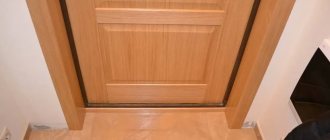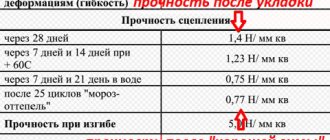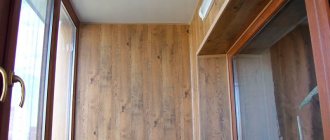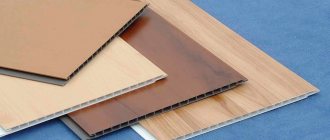The scope of application of polyurethane foam boards (PPU boards) is construction. The slabs are used as a heat-insulating material in construction, as well as in the finishing of buildings and premises. In addition, PPU slabs are actively used for insulation of automobile refrigerators.
The use of rigid thermal insulation in the form of polyurethane foam slabs for high-quality insulation of walls, roofs, facades, foundations, refrigerators and houses can significantly reduce the thickness of the insulating layer, therefore increasing the usable area. This quality is especially valuable where there is a lack of free space or where every centimeter of space is especially highly valued. In other words, it is advisable to use PPU thermal insulation boards where other insulating materials with a significantly greater thickness cannot be used.
Production and features of polyurethane foam
The substance was first synthesized by German scientists in 1937. It is based on two components: polyol and polyisocyanate. Polyurethane foam belongs to the group of gas-filled plastics. Its cellular structure depends on the proportion of components used.
Gas-filled cells make up up to 90% of the material; their size determines the mechanical and physical properties of polyurethane. There are several types of polymer:
- Elastic - the material is characterized by softness and elasticity, its name is foam rubber. Its density is 5-35 kg/m3. Area of application: production of household products (sponges, washcloths), furniture fillers, packaging, clothing lining.
- Integral - polyurethane foam has elasticity and mechanical strength. Area of use: production of products for the automotive industry.
- Hard - the polymer has a high density of 30-86 kg/m3. It does not allow moisture and steam to pass through, and can withstand mechanical and chemical influences. The material is gaining popularity among products for heat, noise and waterproofing of buildings.
Depending on the combination of constituent substances, up to 30 different grades of polyurethane foam (PPU) are obtained. They are combined or applied separately depending on the purpose - insulation of openings or walls, acoustic or waterproofing of a building.
The process of mixing isocyanate and polyol must take place at a given temperature; violation of the technology leads to a significant decrease in the quality of the insulation.
The working process
Wall insulation with polyurethane foam can be carried out at temperatures above +10 degrees Celsius. The two-component composition in working condition is a homogeneous mass, which is under high pressure in the installation, heated to +45 degrees Celsius.
Equipment for spraying polyurethane foam Source legion-tehno.ru
Each of the two components enters the mixer in equal proportions. Otherwise:
- Exceeding the dose of polyisocyanate leads to destruction of the foam and loss of thermal resistance;
- if there is more polyol, the dry residue becomes brittle and thermal conductivity increases.
Spraying of polyurethane foam can only be carried out using a high-pressure unit. If the pressure is low, the coating will be uneven. This design has worse thermal insulation properties than expected.
Technical characteristics of polyurethane-based insulation
Polyurethane insulation is superior to many popular materials in its insulating properties. Its cellular structure provides a thermal conductivity coefficient in the range of 0.019-0.035 W/m*K. For comparison, the same indicator for foam plastic is 0.037-0.043 W/m*K, mineral wool is 0.045-0.055 W/m*K. The porous structure ensures blocking of acoustic signals.
The water absorption of a material depends on its density, but all closed-cell rigid polyurethane foams have a low absorbency of about 3% by volume.
High adhesion to various surfaces is one of the features of polyurethane foam. It is sprayed onto metal, concrete, wood, brick. As a result, a monolithic layer 5-7 cm thick is formed, without seams or joints.
Low fire resistance is one of the disadvantages of a polymer insulator. Flame resistance can be increased by adding flame retardants, such as phosphorus and halogens.
The self-hardening composition has significant strength, its ability to expand ensures the filling of all cracks and holes. The preparation of polyurethane foam takes place at the construction site. In special equipment, ingredients are mixed in precise proportions. The finished composition is applied to the insulated surface from a gun.
The density of the polymer is controlled by the operator; for brick walls it is 70-75 kg/m3, and for wooden walls 50-60 kg/m3 is sufficient. Hardening occurs in 15-20 seconds, the resulting material can withstand sudden temperature fluctuations, is guaranteed to last 30 years, and is environmentally friendly. PU foam does not attract rodents and is not a medium for the growth of mold and fungi.
Features of insulation with sprayed polyurethane foam
The insulation of different types of enclosing surfaces is not the same. And although the spraying process is no different, the preparatory and final work is carried out differently.
General requirements
Installation for polyurethane foam
There are general rules for surface preparation and conditions for spraying polyurethane foam:
- The insulated surface must be clean, free from: dust, crumbling areas, traces of oil, grease stains, peeling paint.
- It is recommended to treat porous mineral surfaces with a primer.
- Metal surfaces must be cleaned of rust, degreased and primed.
- When using professional (two-component) spraying installations, the recommended base humidity is as follows: for concrete and brick - 4-5%, for wood - 12%. If necessary, dry the surface with compressed air.
- When using household ready-made aerosol mixtures, the surface is first slightly moistened.
- Recommended operating temperature is +18-25°C.
- The minimum air and surface temperature is +10 °C. Reducing the temperature to +5°C increases foam consumption by 10% higher than usual.
- Work outdoors should be carried out in calm weather. If the wind blows away the torch of sprayed material, work is stopped.
- The surface is insulated in several layers. When calculating the sufficient thickness of the insulation, it is necessary to take into account the creasing of the lower layers under the influence of the upper ones.
Manufacturing of thermal insulation products by pouring method
The production of polyurethane foam is carried out in two ways:
- spraying;
- filling.
The first method is used when performing thermal insulation of a building, and the second is used for the production of formatted materials: slabs, decorative interior elements, pipe shells, sandwich panels. Filling occurs in detachable molds with a closed contour. PPU slabs have a smooth surface, they are resistant to rotting, aggressive and humid environments.
To increase efficiency, foil or fiberglass is applied to the polyurethane insulation. The material is used for thermal insulation of loggias, facades, foundations, walls and floors. The thickness of the slabs is 20-180 mm, their installation reduces energy losses by 40%. The insulation is fixed using glue or bitumen mastic; the strength of the fastening is increased by the use of plastic dowels. Polyurethane foam forms a reliable base on which plaster is applied. When installing panels, the joints are covered with polyurethane foam.
Pipe shells are produced using the pouring method. These products are used for heat and waterproofing of cold and hot water supply lines, heating networks, oil and gas pipelines. The shell is made without coating and with the application of fiberglass, glassine, and foil. The products are resistant to low temperatures and chemical influences and can be reused.
Thermal insulation boards
1. Polyurethane foam slabs (PPU slabs). They are produced with an insulating layer thickness from 20mm to 180mm. The ends of the slabs are made with a quarter/without a quarter. The service life of polyurethane foam boards is at least 30 years.
Plates are manufactured:
- without cover;
— armofol extra coating;
- fiberglass coating.
Due to their design, the slabs can be used for internal and external thermal insulation. PU foam slabs have increased thermal insulation and environmental performance compared to other types of thermal insulation. They allow you to significantly reduce the thickness of walls and other structural elements.
Thermal insulation based on a slab of closed-cell rigid polyurethane foam has the following characteristics:
— resistance to chemical media and biological substances;
- no rotting;
— durability;
— no deformation due to temperature changes;
— low water absorption;
- resistance to damage by rodents.
Installation of polyurethane foam slabs can be done at any time of the year. Polyurethane foam boards are easily machined. For ease of installation and improved thermal insulation performance, the slabs are equipped with locks along the entire perimeter.
2. Mineral wool slabs.
They are made from stone wool based on rocks of the basalt group. They can be produced laminated with reinforced aluminum foil on one side. Stone wool slabs are intended for thermal insulation of air ducts, flues, tanks, boilers, process equipment, flat vertical and horizontal surfaces, furnaces, at various industrial sites and equipment of engineering systems in residential, civil and industrial construction.
3.
PIR boards.
Thermal insulating material based on PIR belongs to the class of thermoset polymers with a gas-filled closed cellular structure containing permanent gas. Due to its structure and components, the material has low thermal conductivity, high compressive strength, stability of geometric parameters, as well as thermal and chemical resistance. PIR thermal insulation boards have a long service life (more than 50 years), and due to the low water absorption coefficient, the material is not subject to the destructive effects of water, mold, fungi, as well as rotting, including in conditions of high humidity. The material is environmentally friendly and safe and does not emit harmful substances under any operating conditions. Slabs are made with a straight or “L”-shaped edge to improve the joining of the material to each other and create a continuous thermal insulation circuit without cold “bridges”.
Order PPU slabs
To clarify prices and order PPU slabs, send an online application to the company’s sales department. Delivery is carried out throughout Russia.
Pros and cons of using polyurethane foam for insulating buildings
Among the advantages of polyurethane foam insulation:
- There is no need to use fasteners when applying spray-on insulation.
- Creation of a monolithic layer without seams and the possible occurrence of cold bridges.
- High adhesion to surfaces of any shape and material.
- The moisture resistance of polyurethane foam allows it to be used as a waterproofing material.
- The material is resistant to chemicals, rotting, radiation and corrosion.
- The low weight of foamed thermal insulation does not load the structure.
- After hardening, the coating is used in the temperature range from −150º to +150º C.
Disadvantages of the material:
- is destroyed when exposed to ultraviolet radiation;
- complete vapor tightness of the insulation layer requires the installation of additional ventilation;
- the production of polyurethane foam is harmful and dangerous;
- Polyurethane foam is a flammable material; in order to reduce the fire hazard, fire retardants are added to its composition;
- high cost of insulation spraying services;
- If technology is violated or low-quality raw materials are used, the properties of the heat insulator significantly deteriorate.
Types of material
Polyurethane foam comes in three types:
- Open cell. The structure of the material consists of interconnected open cells. This type of polyurethane foam has the best heat saving performance. This insulation also absorbs excess moisture, and when it drops sharply in the air, it releases it. The room where the walls are covered with this material is not too humid or, conversely, dry. The ability to quickly absorb moisture is both an advantage and a disadvantage (in some cases). If there is too much moisture and the air temperature drops below zero, the wet insulation begins to freeze and collapse. Therefore, open-cell polyurethane foam is used only for covering indoor surfaces where the temperature does not drop to zero. This type of polyurethane foam is inexpensive.
- Closed cell. The material also consists of cells, but they are isolated from each other. This property does not allow it to absorb moisture, therefore it is used for outdoor work. But it is precisely this quality that is an advantage if it is necessary to insulate the house from the outside. The material can withstand not only moisture, but even rain and snow. The disadvantage of the material is its high cost.
- Sheet. Affordable material with good heat saving properties. It is used primarily for interior work. If you insulate external walls with these slabs, you must additionally insulate them from moisture. The thickness of the slabs can be from 2 to 10 centimeters, they can be installed independently. Installation of the slabs will not take much time and will not require the use of special equipment. The service life of the insulation is up to 20 years.
Scope of application of polyurethane foam insulation
The use of polyurethane foam in various industries results in a high economic effect, thanks to reliable thermal insulation with a long service life. Depending on the brand of polyurethane foam, its scope of application includes:
- Commercial and industrial refrigeration chambers.
- Insulation of main pipelines.
- Carrying out sound insulation and corrosion protection of car bodies.
- Thermal insulation of internal and external structures of residential buildings, warehouses, industrial premises.
- Use as insulation in the manufacture of sandwich panels from metal sheets.
Advantages
The popularity of polyurethane foam boards for insulation is understandable. The material has high rates of sound insulation and thermal insulation. Unique waterproofing properties allow polyurethane foam to resist rotting, fungus formation, and large temperature changes. The material does not cause allergies, which is also important when using it in residential areas.
The low weight of polyurethane foam does not cause a load on the frame of the entire structure. The material can take any necessary shape; this property allows it to be used for the manufacture of mattresses and furniture upholstery.
Polyurethane foam boards are easy to install and process, they are easy to cut, drill, saw. They are durable, retain their thermal insulation properties without loss of quality for up to fifty years. They can be dismantled and used elsewhere.
Can I apply it myself?
This is possible, but we still recommend entrusting the work to the professionals of our company. The fact is that to create polyurethane foam thermal insulation it is necessary to carefully calculate the amount of material and choose the optimal method of application.
It is also important that polyurethane foam should be sprayed in compliance with safety measures:
- It is necessary to ensure protection of exposed skin and mucous membranes.
- Special masks with a forced supply of clean air should be used. This helps protect the respiratory system.
When applying thermal insulation materials, our employees use professional equipment. Equipment of this level is expensive, so buying it for one-time work is unprofitable. Contacting specialists will allow you to save not only time, but also money.
Manufacturers and prices
Experts call the following companies the best producers of polyurethane foam:
BASF Polyurethanes GmbH. The German company is a leader in the production of polyurethanes. The product line also includes polyurethane foam. In Russia, together with OJSC Nizhnekamskneftekhim, they created the Elastokam enterprise to produce components for polyurethane foam.
Yantai Wanhua Polyurethanes Co., Ltd. Chinese manufacturer with a high-quality line of polyurethane foams.
SYNTHESIA INTERNACIONAL SLU The Spanish chemical company SYNTHESIA INTERNACIONAL SLU has been producing polyurethane foam since 2008. The products have found their buyers in many countries around the world, including Russia.
The price from all manufacturers is about $650 per 1 m3.
How to properly insulate with polyurethane foam?
The technology of insulation using polyurethane foam has some features, and the technology for performing the work must be strictly followed - otherwise it will be impossible to achieve the desired result.
It should be borne in mind that it is naturally more convenient and best to carry out work at the stage of construction and/or renovation of a house. But it is quite acceptable to carry them out in a building in use, especially when it comes to exterior work.
But it should be taken into account that when insulating walls indoors, you will still have to do cosmetic repairs afterwards, since a decorative cladding will be required for the applied layer of thermal insulation.
But another factor must be taken into account: internal insulation always loses to external insulation, and primarily due to a possible shift in the dew point, which may appear either inside the wall, contributing to its gradual destruction, or on the inner surface - in this case, problems associated with the fight against mold and mildew , can't be avoided.
Before insulation is carried out, its future thickness should be correctly calculated, which is directly determined by the climate characteristics of a particular region, as well as the thermal conductivity of the material from which the walls of the building are constructed.
And before you begin directly applying polyurethane foam, you should carry out the necessary preparatory work.
First you need to clean the surface to be treated from old coating and paint, from remnants of thermal insulation and other types of finishing. Particular attention should be paid to areas with oily stains, which can reduce the adhesion of the insulation and the surface - they are removed mechanically.
In addition, weak areas of the surface also deserve attention - they also need to be removed, and if necessary and large-scale such damage will need to be repaired using repair compounds or, for example, cement-sand mortar.











